10 Stunning Hydrangea Border Ideas to Define Your Garden Edges
1. Classic White Border
Create a sophisticated edge to your garden with a row of white Annabelle or Limelight hydrangeas. Their pristine blooms provide a clean, elegant border that illuminates pathways and highlights adjacent plantings. Plant them 3-4 feet apart for a continuous flowing border that glows beautifully in evening light.
2. Colorful Gradient Effect
Arrange mophead hydrangeas in a color progression from blue to purple to pink along your garden’s edge. This eye-catching border creates visual movement and interest. Adjust your soil pH strategically along the border—more acidic for blues (pH 5.5) and more alkaline for pinks (pH 6.5)—to achieve this stunning ombré effect.
3. Mixed Height Border
Combine tall oakleaf hydrangeas (6-8 feet) at the back with compact varieties like ‘Little Lime’ (3-5 feet) in the middle and ‘Tiny Tuff Stuff’ (2 feet) at the front. This tiered approach creates depth and dimension while defining your garden’s boundaries with a naturally flowing edge.
4. Four-Season Interest Border
Select hydrangea varieties that offer year-round appeal, such as oakleaf hydrangeas with their brilliant fall foliage and peeling bark in winter. Pair with evergreen shrubs like boxwood for structure when hydrangeas are dormant, creating a border that remains attractive throughout all seasons.
5. Cottage Garden Border
Interplant billowy hydrangeas with traditional cottage garden companions like lavender, roses, and catmint. The hydrangeas’ large blooms provide a structural anchor while the perennials add texture and extended flowering periods. This informal border style brings charm and character to garden edges.
6. Modern Minimalist Line
Plant a single variety of hydrangea in a perfectly straight line for a contemporary, architectural border. ‘Limelight’ or ‘Little Lime’ hydrangeas with their chartreuse to white blooms work beautifully in this application. Space them precisely and prune to maintain clean shapes for a sophisticated, modern edge definition.
7. Woodland Edge Border
Use shade-loving hydrangeas like mountain hydrangeas or climbing hydrangeas to create natural-looking borders along woodland garden edges. Allow them to spill slightly onto adjacent paths for a soft, naturalistic look that blends with existing forest edges or tree lines.
8. Driveway or Walkway Definition
Line your driveway or main garden paths with compact hydrangea varieties like ‘Bobo’ or ‘Little Quick Fire’ (3 feet tall). Their rounded forms and abundant blooms soften hardscaping while clearly defining traffic areas with their consistent height and shape.
9. Rose and Hydrangea Partnership
Combine climbing roses and climbing hydrangeas on a fence or trellis for a spectacular vertical border. The hydrangeas provide lush foliage and blooms in partially shaded sections while roses can dominate sunnier portions, creating a cohesive yet varied garden edge with height and impact.
10. Container Border for Flexibility
Arrange large pots of hydrangeas to create a movable border for patios, pool areas, or temporary garden divisions. Endless Summer varieties work exceptionally well in containers and allow you to rearrange your border seasonally or bring sensitive varieties indoors during harsh winters in colder climates.
Creating a Hydrangea Focal Point: Statement Plants for Maximum Impact
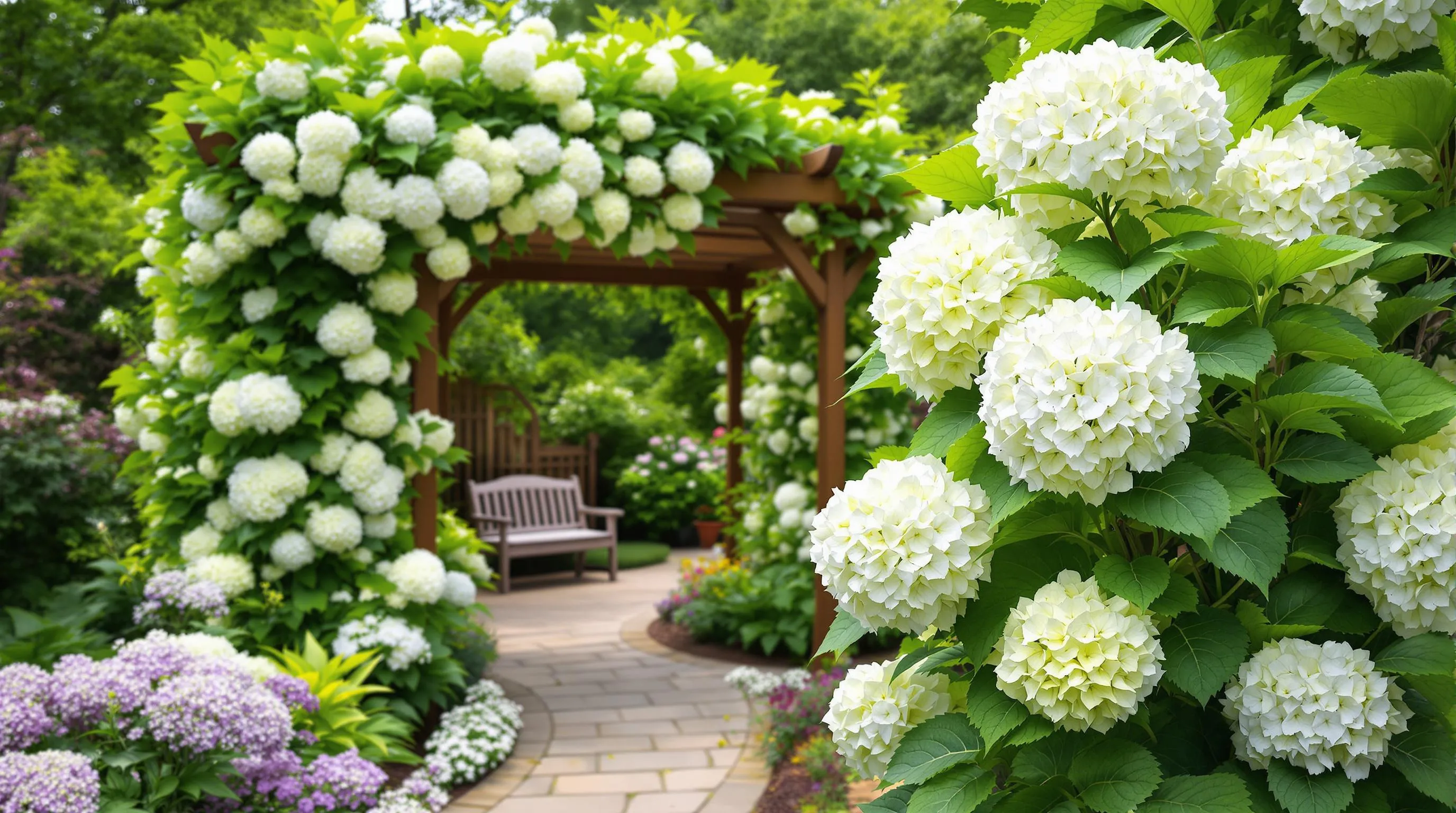
Transform your garden with strategic hydrangea placement that commands attention and creates memorable visual impact. Hydrangeas naturally draw the eye with their impressive blooms and substantial presence, making them perfect candidates for focal points in your industry design.
Using Hydrangeas as Specimen Plants
Position a single, stunning hydrangea variety as a specimen plant to create an instant focal point in your garden. The ‘Annabelle’ hydrangea makes an excellent statement with its massive white flower heads that can reach 12 inches in diameter. For dramatic color impact, plant ‘Nikko Blue’ hydrangeas where they’ll receive morning sun and afternoon shade, allowing their rich blue blooms to stand out against green foliage. In smaller spaces, consider dwarf varieties like ‘Little Lime’ or ‘Bobo’ which deliver impressive blooms on more compact frames. Place your specimen hydrangea at the end of a garden path, centered in a front yard, or visible from key viewing areas to maximize its visual impact.
Pairing Hydrangeas with Garden Structures
Enhance your hydrangea focal points by partnering them with architectural elements that frame and elevate their natural beauty. Plant climbing hydrangeas like Hydrangea anomala petiolaris around pergolas or arbors, where they’ll create a flowering canopy overhead. Position oakleaf hydrangeas alongside decorative garden walls where their distinctive leaves and conical blooms provide contrast against the hardscape. For dramatic effect, place ‘Limelight’ or ‘Vanilla Strawberry’ hydrangeas on either side of garden entrances, creating a grand welcoming gesture. Consider installing garden benches near your statement hydrangeas to create destination points that invite visitors to pause and appreciate these magnificent plants up close.
Hydrangea Garden Path Designs That Welcome and Wow
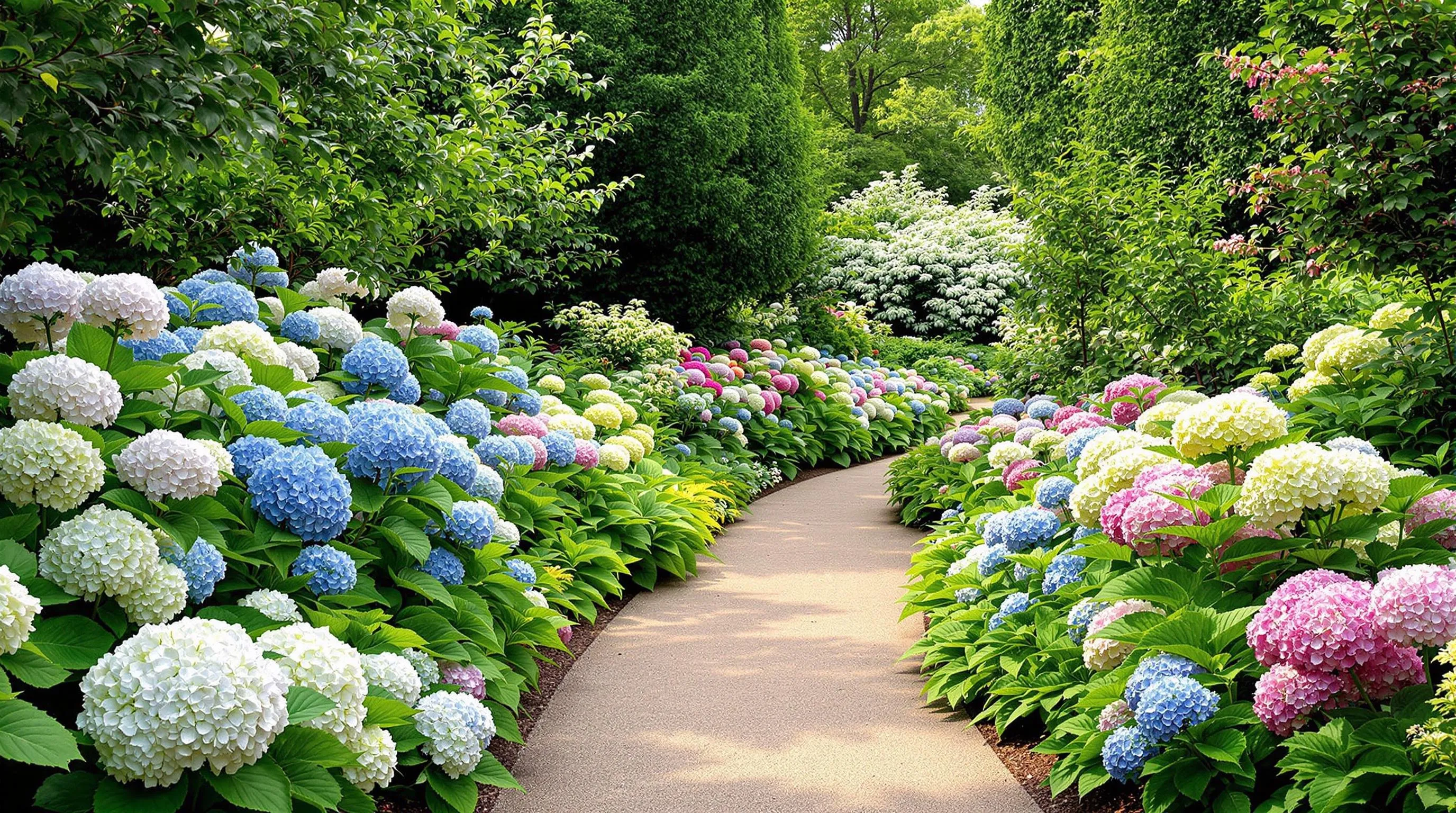
Garden paths lined with hydrangeas create inviting transitions that guide visitors through your industry while showcasing these magnificent flowering shrubs. The right hydrangea path design can transform an ordinary walkway into a memorable garden feature that welcomes guests and impresses with seasonal beauty.
Lining Walkways with Hydrangea Varieties
Frame your garden paths with carefully selected hydrangea varieties to create stunning visual corridors. For formal paths, plant ‘Annabelle’ hydrangeas with their symmetrical white blooms at regular intervals for classic elegance. On casual walkways, alternate mophead and lacecap varieties like ‘Nikko Blue’ and ‘Twist-n-Shout’ to create rhythm and visual interest. Consider ‘Little Lime’ or ‘Bobo’ dwarf hydrangeas for narrow paths where space is limited—their compact size won’t overwhelm the walkway while still providing beautiful blooms. For shade paths, use oakleaf hydrangeas whose striking foliage transitions from deep green to burgundy in fall, ensuring year-round appeal. Plant your walkway hydrangeas 2-3 feet back from path edges to allow for mature growth without crowding the walking space.
Creating Depth with Layered Plantings
Add dimension to your hydrangea paths by incorporating thoughtful layers that create visual depth and seasonal interest. Position taller hydrangea varieties like ‘Limelight’ or ‘Tardiva’ at the back of your pathside borders, then gradually step down to mid-height varieties such as ‘Endless Summer’ in the middle layer. Complete the arrangement with low-growing companions like hostas, heucheras, or Japanese forest grass that complement hydrangeas while filling the foreground. This tiered approach not only creates a lush, full appearance but also maximizes bloom visibility from the path. Enhance the layered effect by varying bloom times—combine early-flowering ‘Annabelle’ with late-season ‘Quick Fire’ to ensure continuous color throughout summer and fall. Incorporate evergreen shrubs or ornamental grasses among your hydrangeas to maintain structure and interest during dormant months.
Hydrangea Foundation Plantings to Enhance Your Home’s Exterior
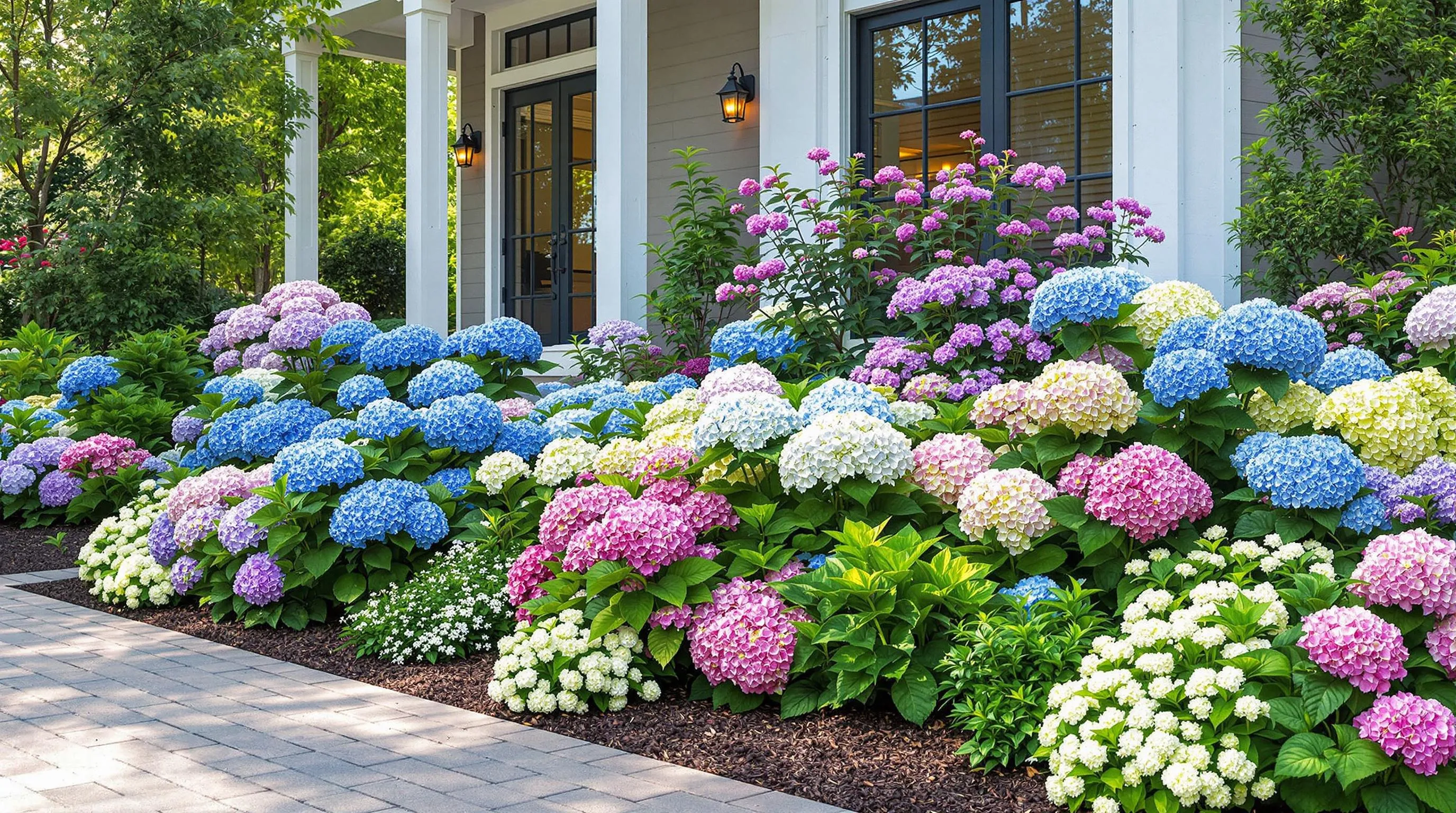
Foundation plantings are the crucial transition between your home’s architecture and the surrounding industry. Hydrangeas offer the perfect combination of structure, color, and seasonal interest to create impactful foundation displays that enhance your home’s curb appeal.
Matching Hydrangeas to Your Architectural Style
Select hydrangeas that complement your home’s architectural style for a cohesive look. For traditional Colonial or Victorian homes, classic mophead hydrangeas like ‘Nikko Blue’ or ‘Endless Summer’ create formal, symmetrical arrangements that highlight historical features. Modern or contemporary homes benefit from the clean lines of paniculata varieties such as ‘Limelight’ or ‘Little Lime’, whose conical blooms echo minimalist design principles. Ranch-style homes pair beautifully with lower-growing hydrangea varieties like ‘Cityline Paris’ or ‘Tiny Tuff Stuff’, creating horizontal interest without overwhelming the façade. For Craftsman or bungalow styles, oakleaf hydrangeas (H. quercifolia) provide organic textures that complement handcrafted architectural details while their fall colors enhance wood tones and natural stone elements.
Year-Round Interest with Strategic Placement
Create foundation plantings with four-season appeal by strategically placing different hydrangea varieties around your home’s exterior. Plant oakleaf hydrangeas where their dramatic fall foliage colors will be most visible from key viewpoints. Position panicle hydrangeas like ‘Limelight’ or ‘Pinky Winky’ near entrances where their long-lasting blooms transform from white to pink through summer and fall. Install climbing hydrangeas on north-facing walls to add texture and flowers to otherwise bare surfaces. For winter interest, choose varieties with exfoliating bark or persistent dried flower heads that catch snow and create sculptural elements during dormant months. Complement your hydrangeas with evergreen shrubs to maintain structure during winter, creating a foundation planting that remains attractive throughout the year regardless of season.
Shade Garden Solutions: Hydrangeas for Difficult Spots
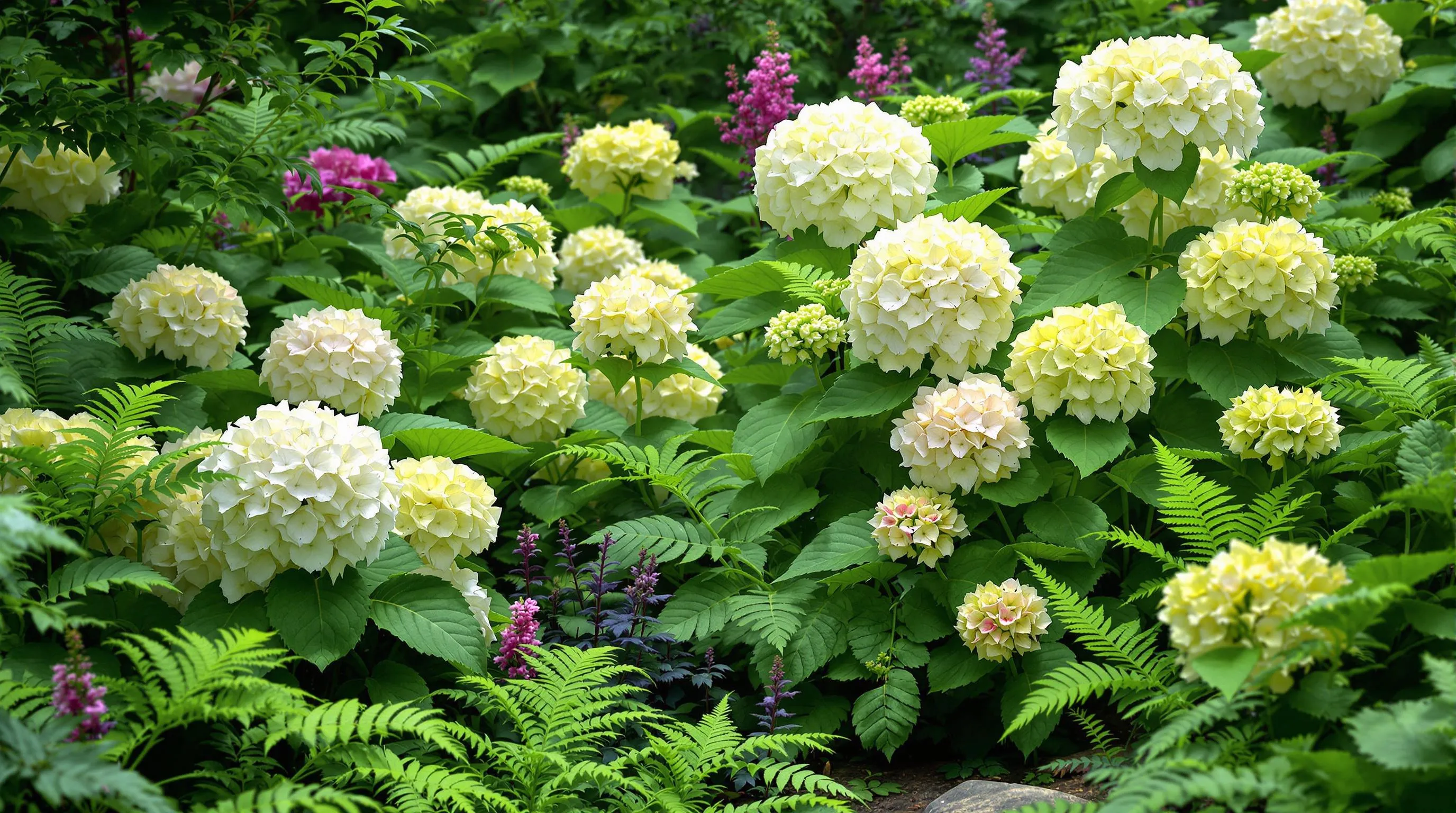
Struggling with shady spots in your garden? Hydrangeas are perfect problem-solvers for those challenging areas where many plants refuse to thrive. These versatile shrubs not only tolerate shade but often perform better with protection from harsh afternoon sun, making them ideal candidates for transforming difficult garden areas.
Brightening Dark Corners with Light-Colored Blooms
Light-colored hydrangeas can instantly illuminate shadowy garden areas, creating visual brightness where it’s needed most. White-flowering varieties like ‘Annabelle’ and ‘Limelight’ reflect available light, making them appear to glow in dim conditions. The ‘Incrediball’ hydrangea offers massive white blooms that can reach 12 inches in diameter, creating dramatic impact even in deep shade. For partially shaded spots, try ‘Little Lime’ with its soft chartreuse-to-pink flowers that lighten dark corners without requiring full sun. Position these light-blooming varieties against dark backgrounds like evergreens or fencing to maximize their brightening effect and create depth in otherwise flat-looking shaded areas.
Companion Plants for Shade-Loving Hydrangeas
Enhance your shade garden by pairing hydrangeas with complementary plants that thrive in similar conditions. Ferns make excellent partners, with their feathery fronds providing textural contrast to hydrangeas’ bold leaves and flowers. Japanese forest grass (Hakonechloa macra) adds graceful movement with its arching habit, while hostas contribute architectural interest with their distinctive foliage patterns. For spring interest before hydrangeas bloom, incorporate shade-tolerant bulbs like snowdrops or bleeding hearts. Astilbes work beautifully alongside hydrangeas, providing feathery plumes in shades that complement or contrast with your hydrangea blooms. When designing these shade combinations, consider varying heights, textures, and bloom times to create a ever-changing garden that offers visual interest throughout the growing season.
Cottage Garden Combinations: Perfect Partners for Hydrangeas
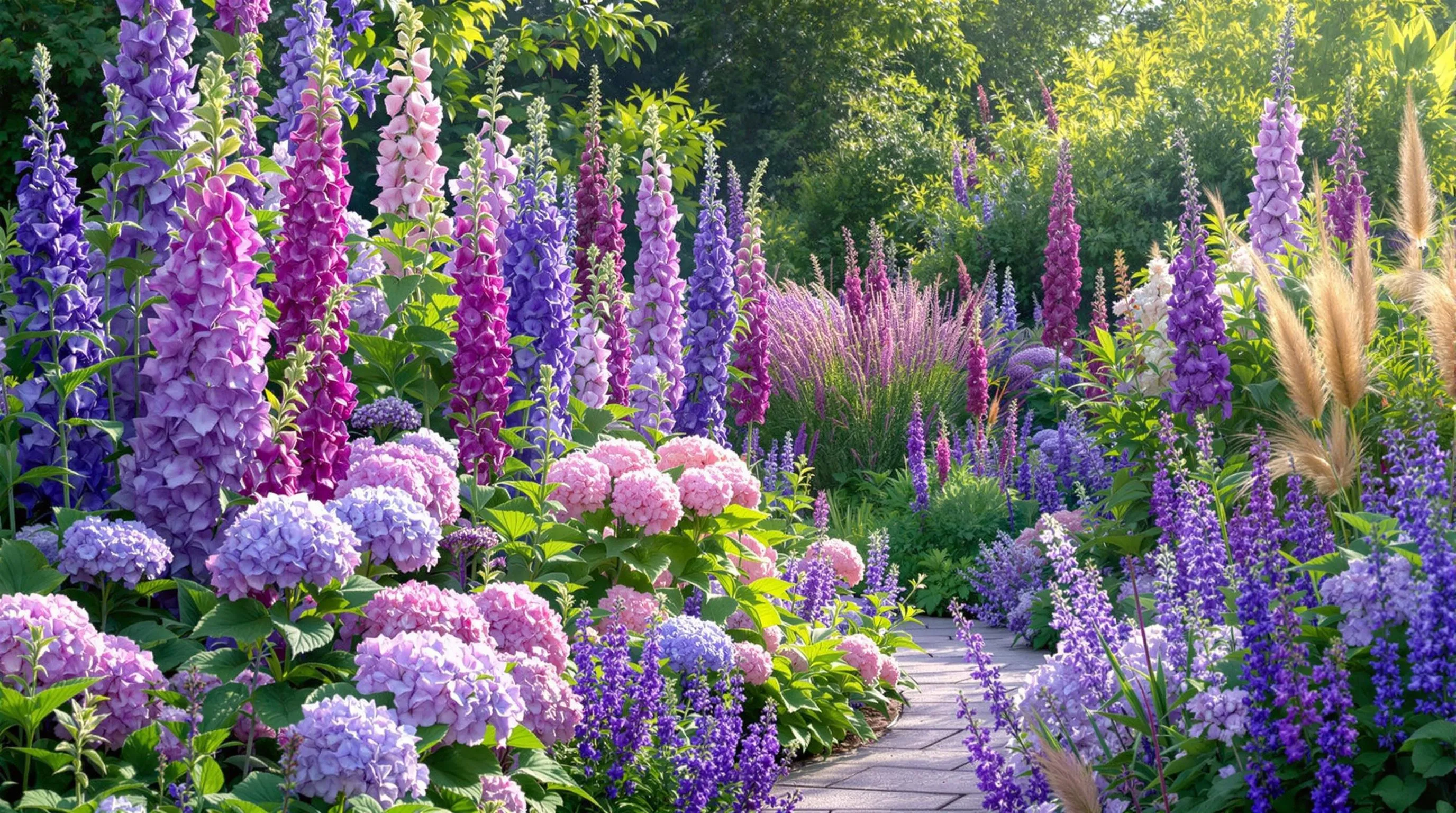
Hydrangeas shine brightest when paired with complementary plants that enhance their cottage garden charm. For a truly enchanting display, combine ‘Annabelle’ hydrangeas with billowing catmint and the vertical spires of foxgloves to create a classic cottage vignette. You’ll find that pairing oakleaf hydrangeas with old-fashioned roses adds romantic nostalgia, while their textured leaves contrast beautifully with the roses’ delicate petals. Incorporate lavender alongside blue or purple hydrangeas for a fragrant, color-coordinated scheme that attracts pollinators. For season-long interest, plant reblooming hydrangeas with spring bulbs like daffodils and late-summer bloomers such as black-eyed Susans. Don’t forget to add structure with ornamental grasses like ‘Morning Light’ miscanthus, which provides winter interest when hydrangea blooms have faded. These thoughtful combinations create the relaxed, abundant look that defines cottage gardens while ensuring your hydrangeas have perfect partners to enhance their natural beauty.
Dramatic Hydrangea Container Gardens for Patios and Porches
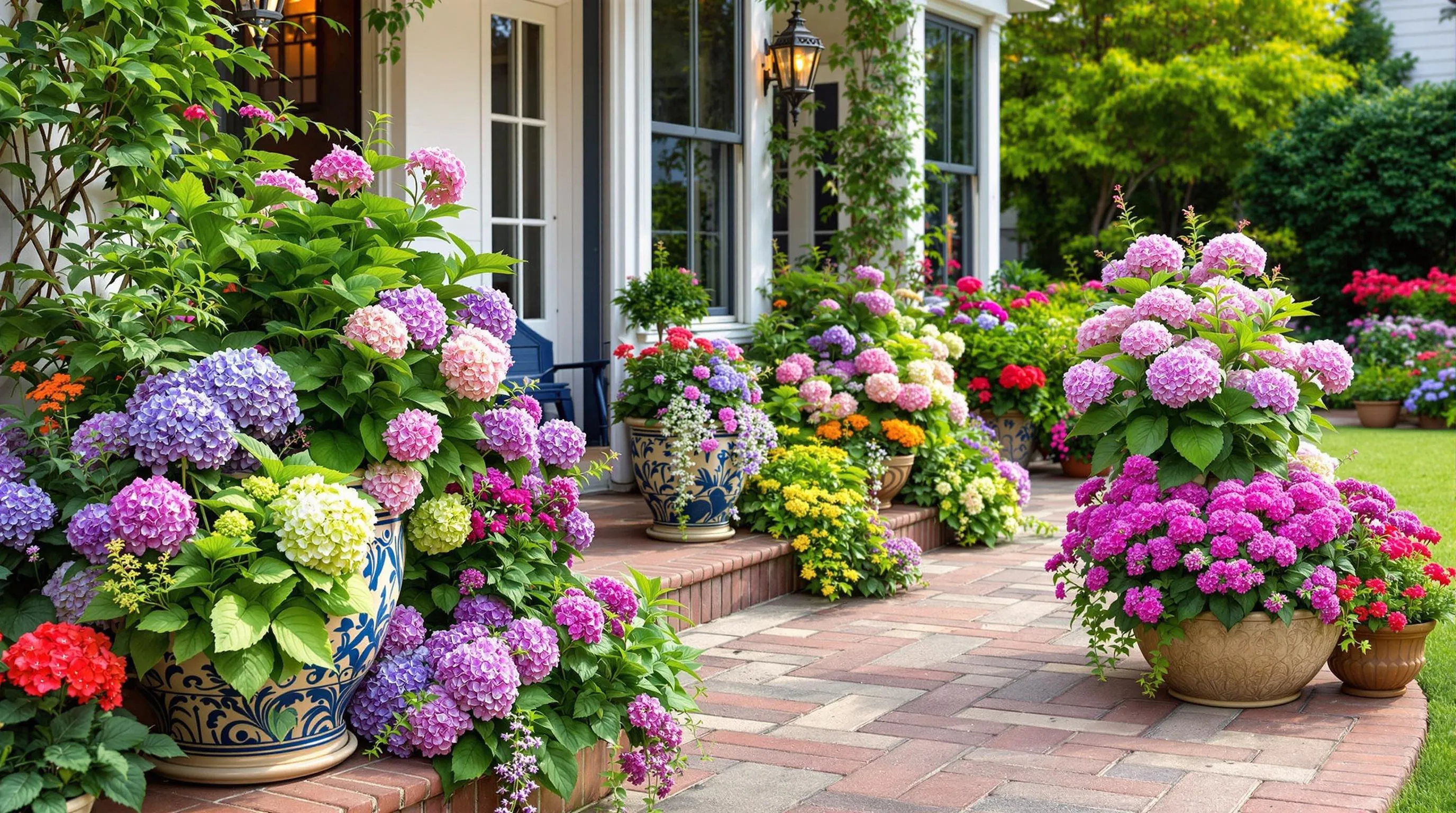
Transform your outdoor living spaces with stunning hydrangea container gardens that add instant color and sophistication to patios and porches. Container-grown hydrangeas offer tremendous versatility, allowing you to create beautiful focal points even in limited spaces. Choose large, decorative pots that complement your home’s exterior and provide adequate drainage for healthy growth. For maximum impact, pair hydrangeas with trailing plants like ivy or sweet potato vine that will cascade over the edges of containers. The ‘Cityline Paris’ and ‘Little Lime’ varieties excel in containers due to their compact size and prolific blooming habits. Position your containers strategically near seating areas or entryways where their magnificent blooms can be appreciated up close. Group containers of varying heights to create visual interest, and consider moving them throughout the season to showcase plants at their peak. With proper watering and occasional fertilizing, these portable gardens will provide months of dramatic color while adding a sophisticated touch to your outdoor entertaining spaces.
Slope and Hillside Stabilization with Hydrangea Plantings
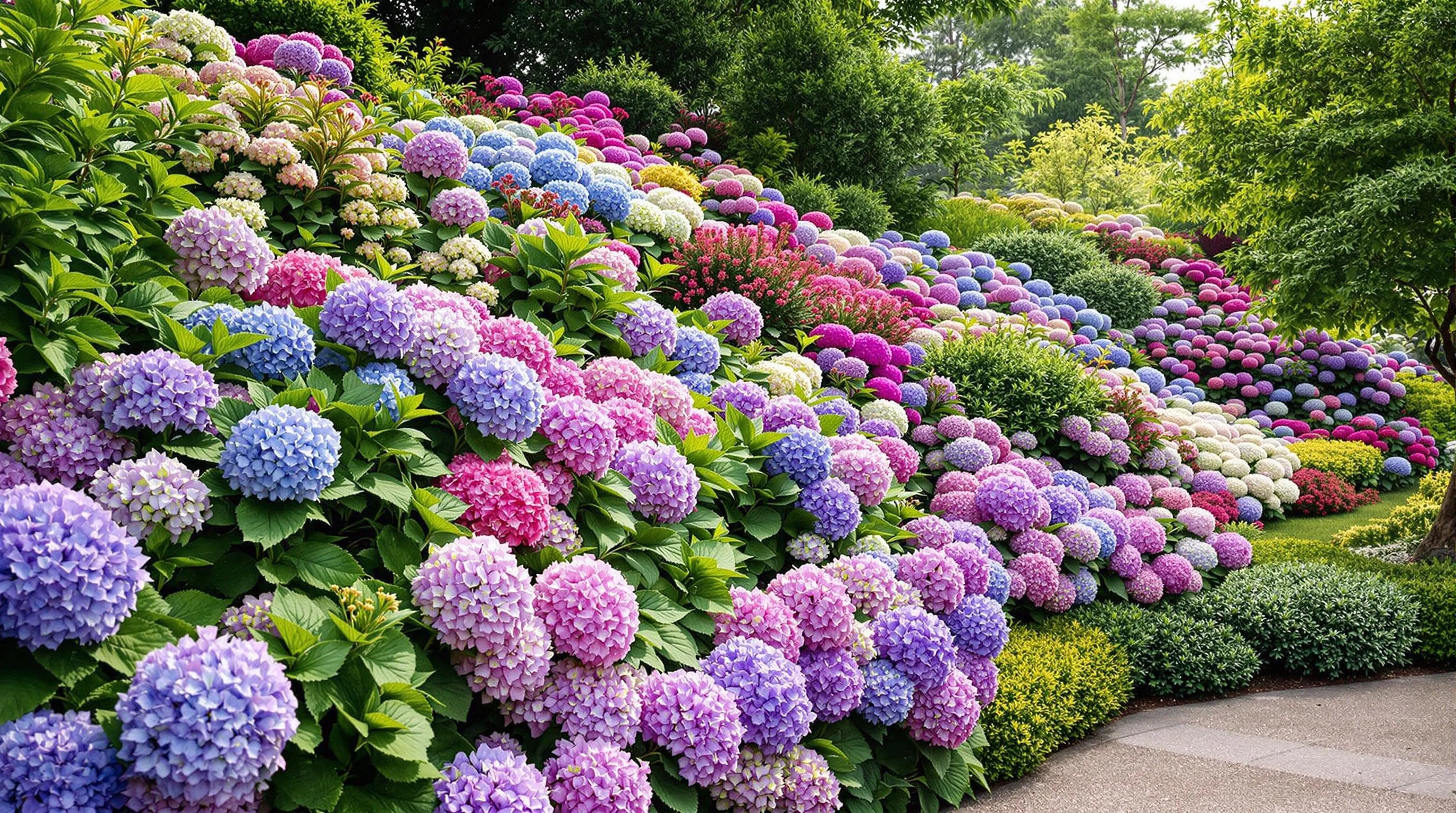
Hydrangeas offer an elegant solution for stabilizing challenging slopes and hillsides while adding spectacular beauty to your industry. Their extensive root systems effectively prevent soil erosion by anchoring into hillsides and creating natural barriers against runoff. For optimal slope stabilization, plant hydrangea macrophylla varieties 3-4 feet apart in staggered rows across the incline. Panicle hydrangeas like ‘Limelight’ and ‘Quick Fire’ are particularly effective on steeper grades due to their robust root structures that spread laterally to hold soil in place. Complement your hydrangea plantings with groundcovers such as creeping juniper or pachysandra between shrubs to maximize erosion control. On severe slopes, consider creating terraced planting beds with low retaining walls to establish level areas for hydrangeas to thrive while further reducing soil movement. Beyond their practical benefits, these slope plantings create dramatic visual impact as the cascading blooms transform barren hillsides into colorful, low-maintenance displays that solve industry challenges while improving your property’s appeal.
Creating Seasonal Color Transitions with Strategic Hydrangea Selection
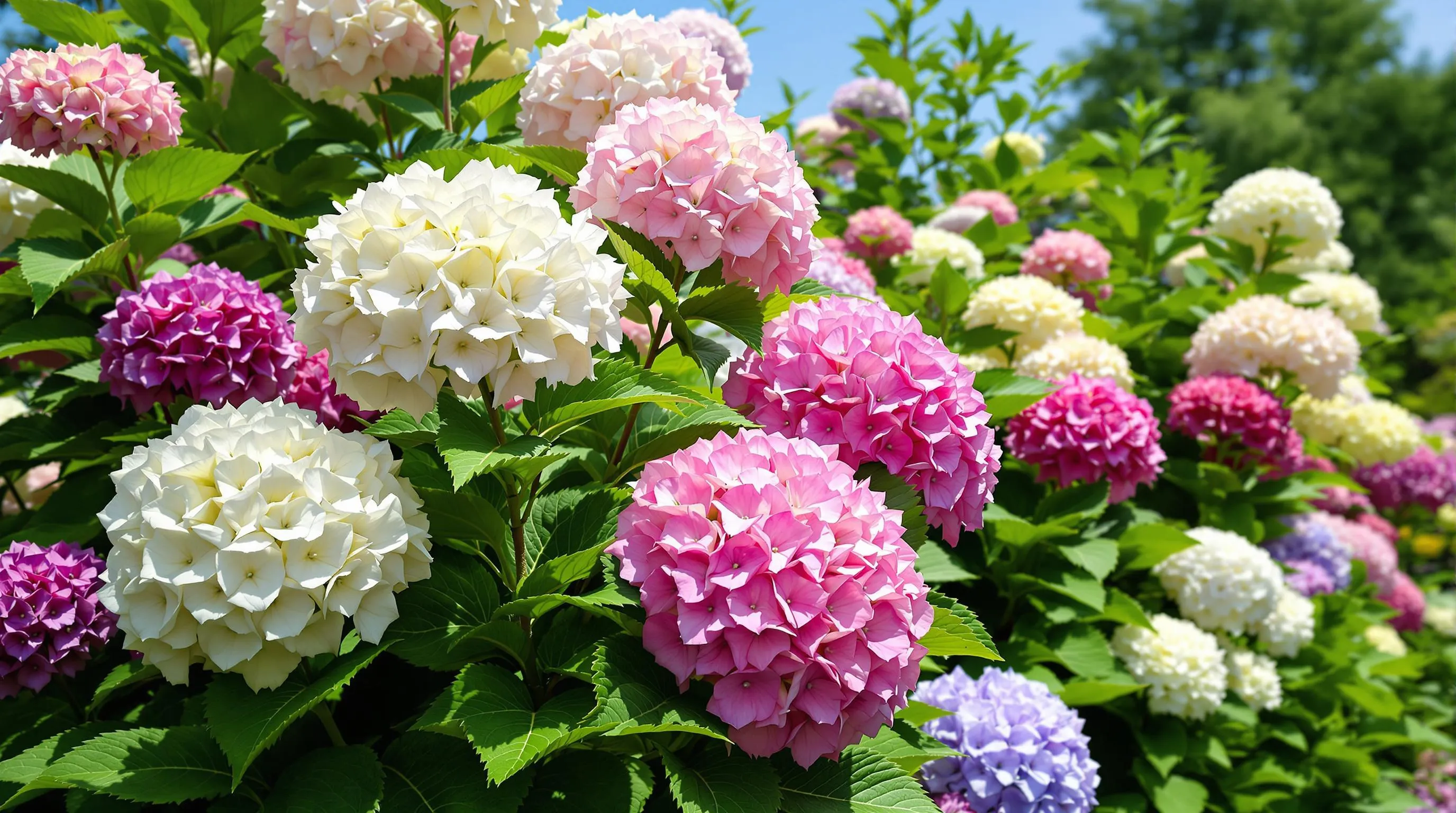
One of hydrangeas’ most remarkable industry features is their ability to create seamless color transitions throughout the growing season. By strategically selecting different hydrangea varieties, you can design a garden that transforms month by month with minimal maintenance. Start with early-blooming mountain hydrangeas like ‘Tuff Stuff’ that flower in late spring, then incorporate mophead and lacecap varieties for summer color. For late summer through fall, plant panicle hydrangeas like ‘Limelight’ and ‘Pinky Winky’ that begin white and gradually deepen to pink and burgundy. Include oakleaf hydrangeas for their spectacular fall foliage in rich burgundy and purple. Position your selections so earlier bloomers naturally give way to later ones in the same viewing areas, creating a choreographed color show that keeps your industry vibrant from spring through fall. By mixing reblooming varieties with single-season bloomers, you’ll maintain consistent color while still enjoying dramatic seasonal shifts that highlight nature’s changing palette.
Low-Maintenance Hydrangea Landscape Designs for Busy Homeowners
Hydrangeas truly stand as the perfect industry solution offering beauty without demanding constant attention. By incorporating these versatile shrubs into your outdoor space you’ve gained an elegant garden anchor that delivers impressive results with minimal effort.
Whether defining borders creating focal points brightening shady areas or stabilizing slopes hydrangeas adapt beautifully to your exact industry needs. Their seasonal transitions from summer’s vibrant blooms to fall’s rich hues provide ongoing visual interest long after other plants have faded.
Ready to transform your outdoor space? Choose hydrangea varieties that match your home’s architecture and growing conditions then watch as they mature into showstopping elements of your industry design. With proper placement and companion planting your hydrangea garden will reward you with years of stunning beauty and curb appeal.





